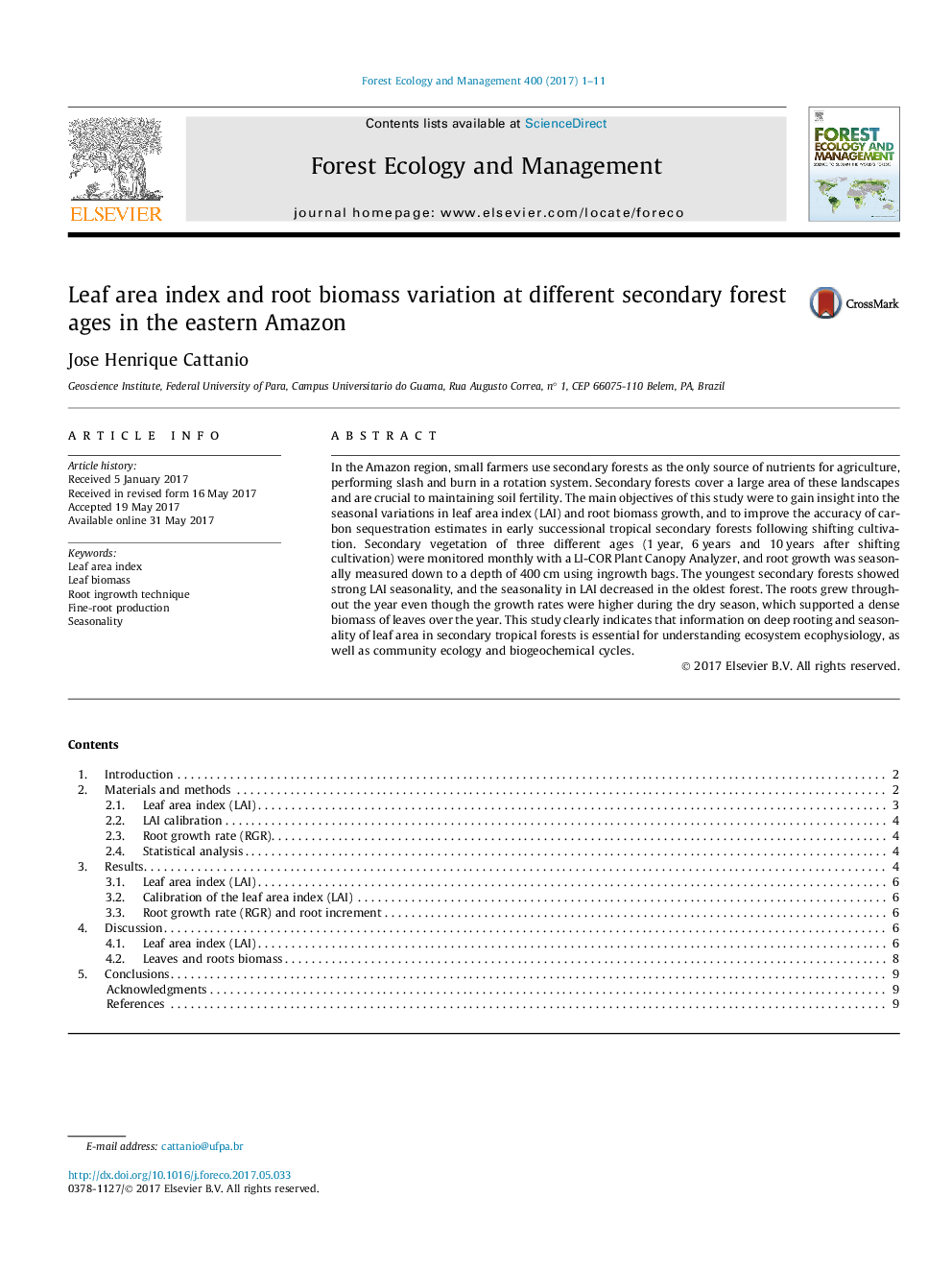| Article ID | Journal | Published Year | Pages | File Type |
|---|---|---|---|---|
| 6459197 | Forest Ecology and Management | 2017 | 11 Pages |
â¢The greatest seasonal variation of LAI was in the youngest secondary forests.â¢The values observed by an optical device (LAI-2000) in the secondary forests are underestimated.â¢Studies with ingrowth bags should consider the soil density inside these bags.â¢The fallow system captures the same amount of carbon in the root system, regardless of age.â¢The growth of deep roots seems to be more related to water search than to nutrients absorption.
In the Amazon region, small farmers use secondary forests as the only source of nutrients for agriculture, performing slash and burn in a rotation system. Secondary forests cover a large area of these landscapes and are crucial to maintaining soil fertility. The main objectives of this study were to gain insight into the seasonal variations in leaf area index (LAI) and root biomass growth, and to improve the accuracy of carbon sequestration estimates in early successional tropical secondary forests following shifting cultivation. Secondary vegetation of three different ages (1Â year, 6Â years and 10Â years after shifting cultivation) were monitored monthly with a LI-COR Plant Canopy Analyzer, and root growth was seasonally measured down to a depth of 400Â cm using ingrowth bags. The youngest secondary forests showed strong LAI seasonality, and the seasonality in LAI decreased in the oldest forest. The roots grew throughout the year even though the growth rates were higher during the dry season, which supported a dense biomass of leaves over the year. This study clearly indicates that information on deep rooting and seasonality of leaf area in secondary tropical forests is essential for understanding ecosystem ecophysiology, as well as community ecology and biogeochemical cycles.
